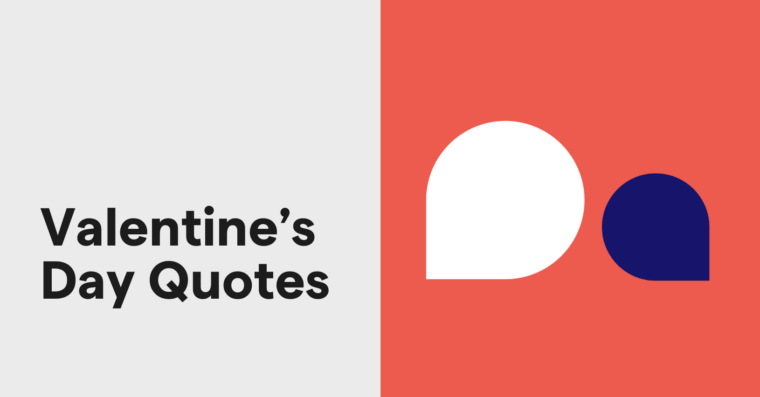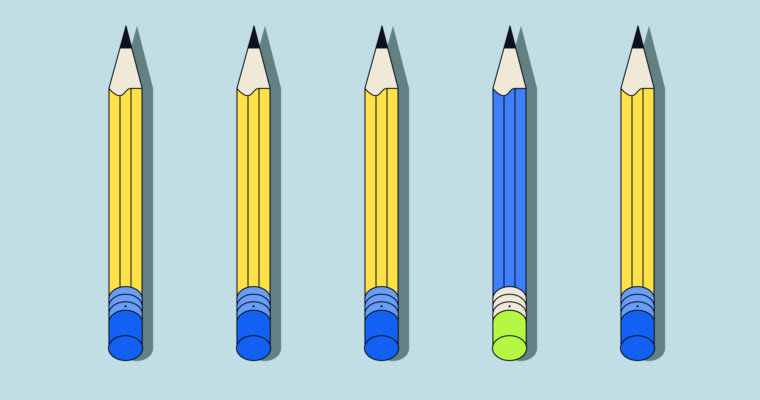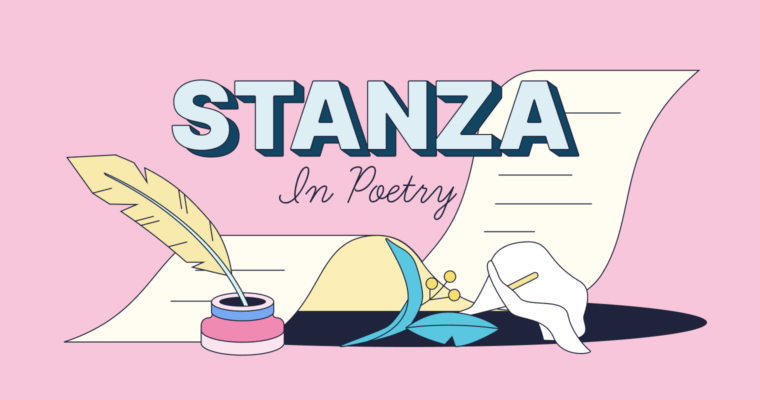
Poetry is a broad literary category that covers a variety of writing, including bawdy limericks, unforgettable song lyrics, and even the sentimental couplets inside greeting cards. Some kinds of poetry have few rules, while others have a rigid structure. That can make poetry feel hard to define, but the variety is also what makes it enjoyable. Through poetry, writers can express themselves in ways they can’t always through prose.
There are more than 150 types of poetry from cultures all over the world. Here, we’ll look at some of the key types of poetry to know, explain how they’re structured, and give plenty of examples.
Key poetry terms
To better understand the differences between types of poetry, it’s important to know the following poetry terms:
Rhyme: Repeated sounds in two or more words. Usually, rhyming sounds are at the ends of words, but this is not always the case. A poem’s rhyme scheme is the pattern its rhymes follow.
Meter: A poem’s meter is its rhythmic structure. The number of syllables in a line and their emphasis compose a poem’s meter.
Form: The overall structure of a poem is known as its form. A poem’s form can determine its meter and rhyme scheme.
Stanza: A stanza is a section of a poem. Think of it like a verse in a song or a paragraph in an essay. Stanzas compose a poem’s form. In a poem, the stanzas can all fit the same meter, or they can vary.
Not all poems have a rhyme scheme, a form, or a meter. A poem might have one or two of these, or it could have all three. Many types of poetry are defined by a specific form, rhyme scheme, or meter. When you set out to write a poem, think about which form—if any—best suits your subject matter. Generally, poetic forms don’t include rules for using punctuation, such as periods and quotation marks, so you have some wiggle room with these.
With poetry, finding ways to fit your words into a form can be just as enjoyable as breaking the rules! Check out these quotes from famous poets about reading and writing poetry.
11 types of poems to know
1 Acrostic
You might remember writing acrostic poems in elementary school. In an acrostic poem, the lines are arranged so the first letter in each line helps to spell out a word. Here’s an example:
Perfect tool for writing on the fly Evolution from quills to fountains, ballpoints to rollerballs No touchscreen or keyboard can replicate the satisfaction of writing by hand
The lines in an acrostic poem can be full lines or single words. There is no required meter or rhyme scheme for acrostic poems; the only requirement is to form a word using the first letter of each line.
2 Ballad
There’s a reason so many songs are also called ballads—ballads are narrative poems characterized by their melodious rhyme scheme. A ballad can be any length, but it must be a series of rhyming quatrains. These quatrains, four-line stanzas, can follow any rhyme scheme. Commonly, the quatrains in a ballad follow an ABCB pattern, like this quatrain from Samuel Taylor Coleridge’s “The Rime of the Ancient Mariner”:
And through the drifts the snowy clifts Did send a dismal sheen Nor shapes of men nor beasts we ken— The ice was all between
An ABCB rhyme scheme refers to the order of the repeated sounds at the end of each line. Here’s a quick example:
A: I write every day B: Someday, I’ll finish my book C: But sometimes I get so immersed B: That I forget to cook!
ABCB isn’t the only acceptable rhyme scheme for ballads. Some follow an ABAB scheme, which means the first and third lines rhyme, and the second and fourth lines rhyme. Whichever rhyme scheme a ballad follows, the rhyme and meter give the poem a feeling of musicality.
3 Elegy
Unlike our previous entries, there are no length or form rules for elegies. However, there is a content requirement: Elegies are about death.
Generally, elegies are reflective and written to mourn an individual or group. They also frequently end with lines about hope and redemption. Elegies originated in ancient Greece, and over time, they morphed into the mourning poems we know them as today.
“Dirge Without Music” by Edna St. Vincent Millay is a well-known elegy. Take a look at this excerpt:
I am not resigned to the shutting away of loving hearts in the hard ground. So it is, and so it will be, for so it has been, time out of mind: Into the darkness they go, the wise and the lovely. Crowned With lilies and with laurel they go; but I am not resigned.
4 Epic
There’s a reason the adjective epic refers to things that are huge, complex, and/or over-the-top: Epics are long, detailed poems that tell fantastical stories of larger-than-life characters. These stories can be fictional, historical, or historical with a generous helping of fiction and drama to heighten the emotion.
Epics have a long history. In fact, The Epic of Gilgamesh, considered by many to be the oldest surviving piece of literature, is an epic poem. Here is a snippet from the epic’s more than 2,000 words:
When the gods created Gilgamesh they gave him a perfect body. Shamash the glorious sun endowed him with beauty, Adad the god of the storm endowed him with courage, the great gods made his beauty perfect, surpassing all others, terrifying like a great wild bull. Two thirds they made him god and one third man.
5 Free verse
Free verse poetry explicitly does away with a consistent rhyme scheme and meter. A free verse poem can be long or short, and it can cover any subject matter—as long as it doesn’t have a consistent rhyme scheme or meter, it’s a free verse poem!
“Autumn” by T.E. Hulme is example of a short free verse poem:
A touch of cold in the Autumn night— I walked abroad, And saw the ruddy moon lean over a hedge Like a red-faced farmer. I did not stop to speak, but nodded, And round about were the wistful stars With white faces like town children.
Free verse vs. blank verse
While their names are similar, free verse poetry is quite different from blank verse poetry. Blank verse poetry is poetry with a specific meter, but no rhyme scheme. Although many blank verse poems are written in iambic pentameter, this is not a requirement. The only requirements for blank verse poetry are that the poem not rhyme and that it adheres to a consistent meter.
6 Ghazal
Ghazals are a type of Arabic poetry that dates to the seventh century. Ghazals are short poems composed of five or more couplets, usually no more than fifteen. A couplet is a pair of lines that typically have the same meter and rhyme. However, ghazals translated into English often can’t retain their rhyme schemes or meters. Sometimes, this rhyme is replaced by a repeated word or phrase, known as the radif or refrain. This word or phrase is repeated at the end of both lines in the first couplet and again in the second line of the succeeding couplets. The words that precede each instance of the refrain should rhyme, as in knot, bought, and taught in the example below. Finally, the last couplet typically includes a “signature”—a reference to the poem’s author.
Generally, ghazals deal with themes of love, both romantic and spiritual, and explore the pain of loss and separation from these kinds of love. Take a look at this excerpt from “Even the Rain,” a ghazal by Agha Shahid Ali:
What will suffice for a true-love knot? Even the rain? But he has bought grief’s lottery, bought even the rain.
“Our glosses / wanting in this world”—“Can you remember?” Anyone!—“when we thought / the poets taught” even the rain?
7 Haiku
A haiku is a short poem characterized by its unique form: a five-syllable line followed by a seven-syllable line followed by a five-syllable line. These lines do not rhyme.
Haiku hail from Japan. Originally, they were a component of a longer type of poem known as a renga. Over time, poets began writing standalone haiku, and today it’s recognized as a distinct poetic form. Haiku are typically about nature, and in Japanese, they contain a kireji, or “cutting word,” that divides the poem into two parts.
Take a look at this example by Matsuo Bashō:
An old silent pond . . .
A frog jumps into the pond,
splash! Silence again.
8 Limerick
Limericks are humorous, often tawdry poems that originated in the nineteenth century. As a form, limericks have specific rules:
- Five lines
- AABBA rhyme scheme
- First two lines contain seven to ten syllables
- Third and fourth lines contain five to seven syllables
- Final line contains seven to ten syllables
Here’s an example of a famous limerick:
There once was a man from Nantucket Who kept all his cash in a bucket. But his daughter, named Nan, Ran away with a man And as for the bucket, Nantucket.
9 Ode
An ode is a poem that praises something or someone. Odes are not required to stick to any specific meter, rhyme scheme, or length—though they often use a formal tone.
Odes originated in ancient Greece, where they were performed with musical accompaniment. Today, they’re often written and recited in celebration of beloved individuals or organizations.
Here is an example of an ode by the Greek poet Pindar:
Creatures for a day! What is a man? What is he not? A dream of a shadow Is our mortal being. But when there comes to men A gleam of splendor given of heaven Then rests on them a light of glory And blesséd are their days.
10 Sonnet
You might remember sonnets from English class. In fact, one thing you might remember is the two main types of sonnet: Shakespearean and Petrarchan.
Both are named for poets who not only made the form their own but also made it famous. Sonnets have roots in thirteenth century Italy. Both types of sonnet adhere to specific rules.
Shakespearean:
- Three quatrains (four lines) and a couplet, which typically concludes the poem
- ABAB, CDCD, EFEF, GG rhyme scheme
Petrarchan:
- Two stanzas: one octave (eight lines) and one sestet (six lines)
- The first eight lines present an argument or question
- A volta, or “turn,” begins the sestet, which responds to the argument posed in the octave
- ABBAABBA, CDCDCD/CDECDE rhyme scheme
Here is an example of a Petrarchan sonnet, “The New Colossus” by Emma Lazarus:
Not like the brazen giant of Greek fame, With conquering limbs astride from land to land; Here at our sea-washed, sunset gates shall stand A mighty woman with a torch, whose flame Is the imprisoned lightning, and her name Mother of Exiles. From her beacon-hand Glows world-wide welcome; her mild eyes command The air-bridged harbor that twin cities frame.
“Keep, ancient lands, your storied pomp!” cries she With silent lips. “Give me your tired, your poor, Your huddled masses yearning to breathe free, The wretched refuse of your teeming shore. Send these, the homeless, tempest-tost to me, I lift my lamp beside the golden door!”
11 Villanelle
When you’ve got an obsession or another intense fixation, write about it in a villanelle. The villanelle is a poetic form that originated in France, initially as a variation of pastoral poetry. Villanelles are specifically about obsessions and follow a strict form:
- 19 lines
- Five tercets (three-line stanzas)
- One quatrain
- ABA, ABA, ABA, ABA, ABA, ABAA rhyme scheme
- Line 1 repeats in lines 6, 12, and 18
- Line 3 repeats in lines 9, 15, and 19
Sylvia Plath’s “Mad Girl’s Love Song” is a famous twentieth century villanelle:
I shut my eyes and all the world drops dead; I lift my lids and all is born again. (I think I made you up inside my head.)
The stars go waltzing out in blue and red, And arbitrary blackness gallops in: I shut my eyes and all the world drops dead.
I dreamed that you bewitched me into bed And sung me moon-struck, kissed me quite insane. (I think I made you up inside my head.)
God topples from the sky, hell’s fires fade: Exit seraphim and Satan’s men: I shut my eyes and all the world drops dead.
I fancied you’d return the way you said, But I grow old and I forget your name. (I think I made you up inside my head.)
I should have loved a thunderbird instead; At least when spring comes they roar back again. I shut my eyes and all the world drops dead. (I think I made you up inside my head.)
Types of poetry FAQs
What is a poem?
A poem is a piece of writing that, in contrast to prose, primarily aims to evoke emotion in readers and listeners. Poems often make use of rhyme schemes, rhythmic structures, and figurative language.
What does all poetry have in common?
All poetry prioritizes emotional impact. A poem can make this impact through word choice, rhythm, perspective, form, use of literary devices, or a combination of these. In poetry, emotional impact is as important, and sometimes even more important, than narrative.
What are the most popular types of poetry?
The most popular types of poetry include haiku, free verse, odes, and limericks.






